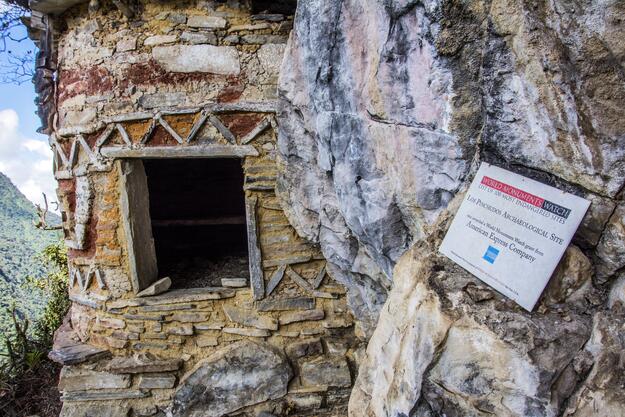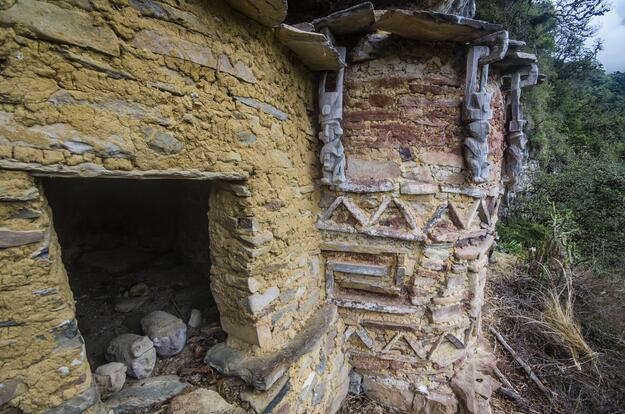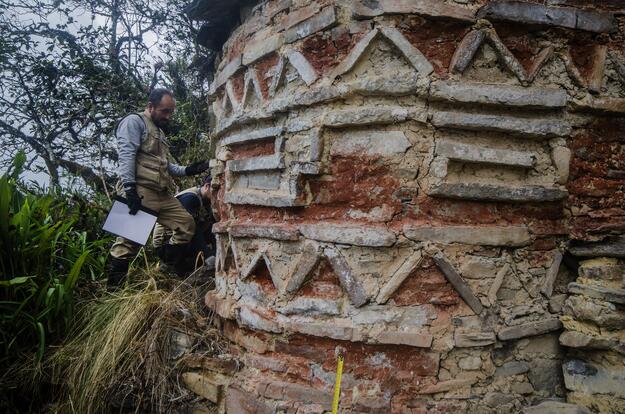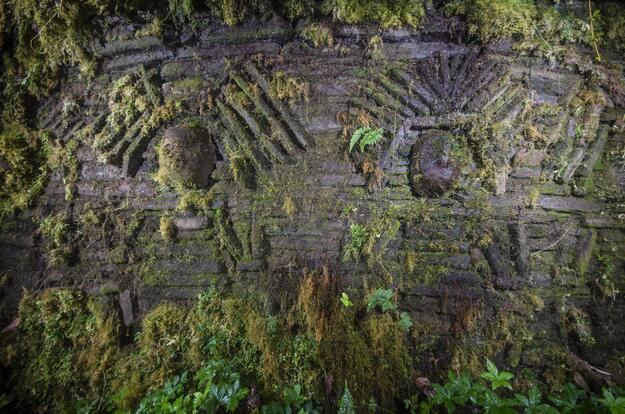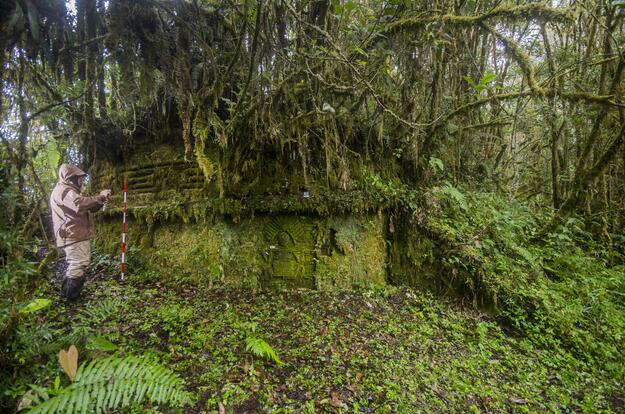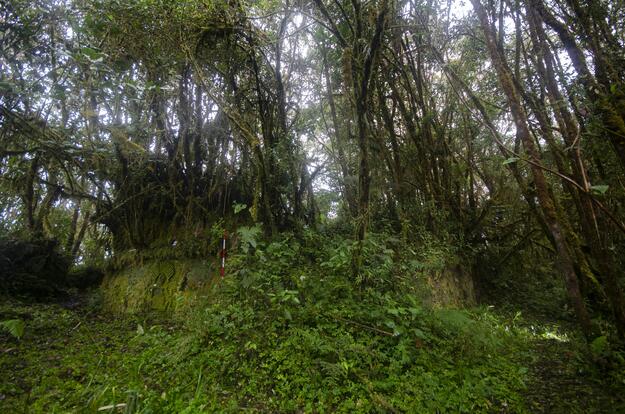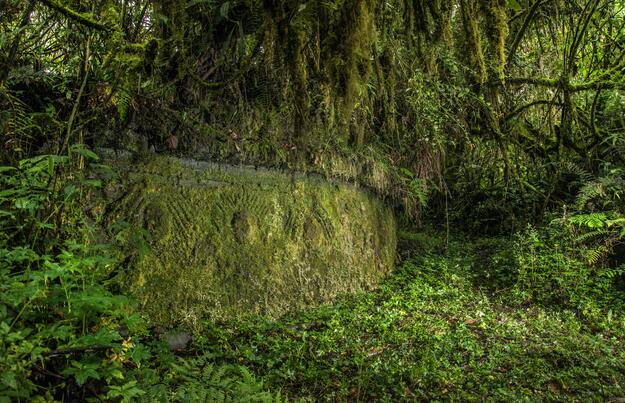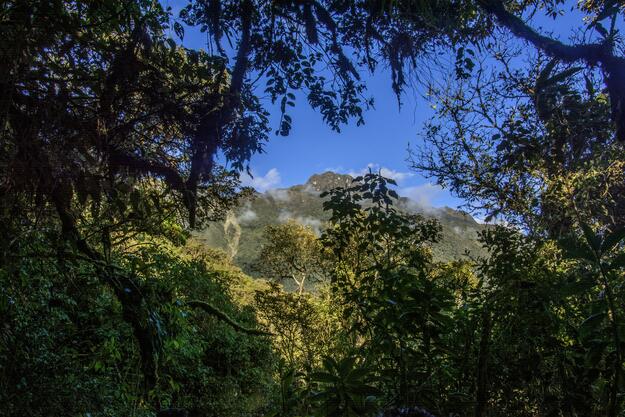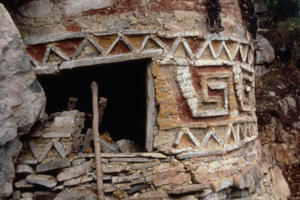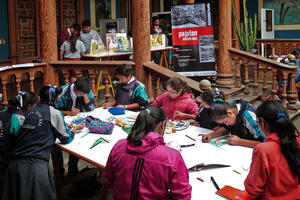Río Abiseo
Site History and Significance
A Constellation of Understudied Archeological Sites
Peru’s Río Abiseo National Park is famous for both its natural and its archeological richness, which resulted in its designation as a Mixed World Heritage Site in 1990. The grounds cover an area of roughly 274,520 hectares of mountain forests and are also home to the remains of numerous buildings from the Chachapoyas civilization. These ancient sites have yet to be fully explored by scholars, as the park is extremely difficult to reach—requiring days of donkey trekking through rugged mountain terrain. The archaeological sites indicate a significant level of human occupation, which dates back to 3,000 BC, however the most monumental sites and productive areas are concentrated approximately circa. 1000 – 1470 AC associated with the Chachapoya culture until the Inca conquest. Since 1985, 36 archaeological sites have been found, including rock shelters, roads, storage structures, platforms, agricultural terraces, burial sites, and domestic and ceremonial complexes.
Stabilizing and Studying Chachapoyas Heritage
The park’s remote location means that these archeological remains have been saved from interference and possible damage—but it also means that they have not received much in the way of care or maintenance. As a result, many areas are now overgrown by trees and vines, weakening the buildings and imperiling their continued survival.
WMF has proposed a project for Río Abiseo with the goal of better understanding the site and stabilizing the structures most in need of help. The intervention will focus on the access roads, Gran Pajatén and Los Pinchudos, where the WMF team will concentrate on documentation, assessment, and conservation where needed. WMF will work closely with local communities in the regions of La Libertad and San Martín to evaluate their needs and desires within the national park while setting up standards to protect the natural environment in an archaeological context.
In late 2022, WMF embarked on a reconnaissance expedition to confirm the feasibility of the project’s objectives. In 2023, a specialized multidisciplinary team conducted fieldwork at the site, and the results of their study allow us to infer the presence of a highly dense Chachapoyas occupation associated with the area’s access trails. They also discovered pottery fragments from pre-Chachapoyas civilizations and rock art associated with burials at Gran Pajatén. In terms of conservation, at Los Pinchudos, all buildings were found to exhibit no signs of structural damage, and three of the mausoleum underwent preventive conservation. At Gran Pajatén, the team performed a conditions assessment on the iconic Building 1, cleaned one of the murals in reliefs, and carried out a topographic survey that shows that Gran Pajatén is much larger and more complex than previously known. The environment has been monitored throughout in order to determine the best way to preserve the unique nature of Río Abiseo.
In addition, the sites have been documented via three- and four-dimensional digital models. Community engagement efforts have included working with local schools and authorities to involve them in the project.
Learn More
Through the World Monuments Watch, WMF collaborates with local partners to design and implement targeted conservation programs—including advocacy, planning, education, and physical interventions in the historic built environment—to improve human well-being through cultural heritage preservation.
Sign up for our newsletter to receive regular updates on our projects, stories from the field, upcoming events, and more!

